FaceOff Read online
Thank you for downloading this Simon & Schuster eBook.
* * *
Join our mailing list and get updates on new releases, deals, bonus content and other great books from Simon & Schuster.
CLICK HERE TO SIGN UP
or visit us online to sign up at
eBookNews.SimonandSchuster.com
Contents
Introduction
David Baldacci
RED EYE
Dennis Lehane vs. Michael Connelly
Patrick Kenzie vs. Harry Bosch
IN THE NICK OF TIME
Ian Rankin vs. Peter James
John Rebus vs. Roy Grace
GASLIGHTED
R. L. Stine vs. Douglas Preston and Lincoln Child
Slappy the Ventriloquist Dummy vs. Aloysius Pendergast
THE LAUGHING BUDDHA
M. J. Rose vs. Lisa Gardner
Malachai Samuels vs. D. D. Warren
SURFING THE PANTHER
Steve Martini vs. Linda Fairstein
Paul Madriani vs. Alexandra Cooper
RHYMES WITH PREY
Jeffery Deaver vs. John Sandford
Lincoln Rhyme vs. Lucas Davenport
INFERNAL NIGHT
Heather Graham vs. F. Paul Wilson
Michael Quinn vs. Repairman Jack
PIT STOP
Raymond Khoury vs. Linwood Barclay
Sean Reilly vs. Glen Garber
SILENT HUNT
John Lescroart vs. T. Jefferson Parker
Wyatt Hunt vs. Joe Trona
THE DEVIL’S BONES
Steve Berry vs. James Rollins
Cotton Malone vs. Gray Pierce
GOOD AND VALUABLE CONSIDERATION
Lee Child vs. Joseph Finder
Jack Reacher vs. Nick Heller
Author Biographies
David Baldacci
For Gayle Lynds and David Morrell
Writers, Dreamers
Extraordinaire
Introduction
In 2004 two accomplished thriller writers harbored a dream. Their names: Gayle Lynds and David Morrell. To that point both Gayle and David had enjoyed long and successful careers. But something was missing. The ‘who-done-its’ had Mystery Writers of America. Those who specialize in fear, the Horror Writers Association. And the Romance Writers Association had long numbered thousands of members.
Every genre seemed to have a trade group.
Except thriller writers.
So Gayle and David decided to start one.
It began in Toronto on October 9, 2004, and from that small beginning sprang International Thriller Writers. Today over 2,500 men and women, from forty-nine countries around the world, hold membership. Eighty percent are working thriller writers. The rest are industry specialists, agents, editors, and fans. Every July the genre gathers in New York City for Thrillerfest. It’s quite literally summer camp for thriller writers and thriller enthusiasts. The Thriller, awarded every year in a variety of categories, is now the prize thriller writers covet, since it was both created and bestowed by their peers.
From its beginning ITW strived to innovate. Doing what everyone else had done was never in its business plan. So, in 2007, when board member (and superb British thriller writer) David Hewson suggested that the organization not charge dues the idea was immediately embraced. If a writer is published by an ITW-recognized house (of which there are hundreds), then membership is free.
So how would the organization sustain itself? Pay its bills?
The answer came in another innovative way.
The organization would create its own books that would be sold to publishing houses, the revenue from which would generate operating capital.
Risky? You bet. Gutsy? Definitely.
But an idea right up ITW’s alley.
ITW’s first publication, Thriller (2006), was the first anthology of thriller short stories ever compiled (remember that precept about never doing what others had done). Thirty-three ITW members donated stories. James Patterson (an ITW member) agreed to serve as editor, and the result became one of the most popular anthologies of all time—selling over 500,000 copies worldwide. The revenue from that groundbreaking book not only provided ITW with initial operating money, it also endowed the organization. Thriller 2 (2009) and Love Is Murder (2012) followed. Keeping with this innovative theme ITW published the first audio book ever written only for the ear: The Chopin Manuscript, which became a resounding success. Edited by the incomparable Jeffery Deaver (an ITW member), Chopin was named the 2008 Audio Book of the Year. That was followed by another audio success, The Copper Bracelet. A move into the world of nonfiction came with Thrillers: 100 Must-Reads, edited by David Morrell and Hank Wagner, which continues to garner widespread critical acclaim. Another ITW board member, the legendary R. L. Stine (creator of Goosebumps), led the organization into the world of young adult fiction with Fear. Annually, ITW shepherds a class of writers through their challenging inaugural year in what is known as the Debut Author Program. First Thrills, edited by ITW founding member Lee Child, became an anthology of stories from the 2011 class.
What an impressive résumé.
All created by author-editors who volunteer their time and writers who donate their stories. Nearly every single penny earned from ITW’s publications has gone to the organization.
And that will be the case with this book.
I joined ITW early on. I agreed with Gayle and David. It was time for an organization of thriller writers. I’ve been waiting for a project where I could become more involved with the group, so when I was approached about editing FaceOff I immediately said yes.
The entire concept intrigued me.
Take iconic writers with iconic characters and face them off against each other. Normally, this could never happen. Each writer is under contract to his or her own respective publishing house. Teaming with another writer, from another house, and combining characters would contractually be impossible. Which house would publish the story? No way to make that call. And no way either house would allow the story to be published by a third company. Only with ITW’s model—that the stories are donated and the money goes to the organization—would this work.
So this volume is truly a once-in-a-lifetime event.
All of the contributors are ITW members. All eagerly agreed to participate. When I was told that ITW founding member Steve Berry, who worked with James Patterson on Thriller, would offer assistance as managing editor, I was thrilled. He’s the glue that held this project together. Thanks, Steve, for all you did.
And thanks to all of the contributors.
Where else will you be able to see Jeffery Deaver’s Lincoln Rhyme meet John Sandford’s Lucas Davenport? Or Patrick Kenzie entering the world of Harry Bosch? Fans of Steve Berry’s Cotton Malone and James Rollins’s Gray Pierce have clamored for years to see those characters together. Then there’s Lee Child’s Jack Reacher meeting up with Joseph Finder’s Nick Heller in a bar in Boston—and doing what Reacher does best. Plus Steve Martini’s Paul Madriani becoming entangled with Linda Fairstein’s Alex Cooper. And the ever-odd Aloysius Pendergast coming face-to-face with the scary world of R. L. Stine.
These are just a few examples of what lies in the pages ahead. All of the stories come with an introduction that describes the writers, their characters, and a bit about the story’s gestation. At the end of the book are contributor biographies—a way to learn more about each of these amazing ta
lents.
You’re in for a real treat.
So let the face-offs begin.
David Baldacci
June 2014
DENNIS LEHANE
VS. MICHAEL CONNELLY
On paper it seemed like a cool idea. Bring Patrick Kenzie and Harry Bosch together in a short story for a good cause. But Dennis Lehane and Michael Connelly quickly realized that it was easier said than done. Both characters are rooted in the verisimilitude of the places they live and the jobs they carry out. They’re fictional, sure, but their creators had worked hard to ensure that neither ever made a false move. In short, Harry Bosch and Patrick Kenzie live or die with readers on the basis of their believability. No gimmick short story—good cause or not—could be allowed to mess with that.
So how would these two iconic characters come together?
Most important, who would come to whom?
Would Bosch go east to Kenzie’s Boston, or would Boston come to LA?
It seemed from the start the natural thing would be to send Bosch east. In the most recent Bosch books Harry works for the LAPD’s Open-Unsolved Unit, a cold case squad that, by its nature, involves travel. When people think they’ve gotten away with murder, part of that getaway is moving away. Since many of Bosch’s investigations have led him out of town, it was decided. Bosch would go to Boston and, while on a case, would cross paths with Kenzie.
Michael started the story in Los Angeles, formulating a crime and a case that Bosch would work several years after it occurred. He would trace a suspect to Boston, travel there to observe, and surreptitiously gather a DNA sample from a discarded coffee cup or a tossed cigarette butt. Once there, he’d cross the radar of Patrick Kenzie, who was working his own investigation, only for different reasons.
Michael wrote the first six pages of the story and a few more containing potential angles of exploration. He e-mailed the package to Dennis, suggesting he add another six pages or so and finish the story. Quick and easy. They’d be done, then back to work on their own stuff in a few days.
Michael waited for a reply.
Then, he waited some more.
A few days turned into a few weeks.
He finally dummied up an e-mail saying he’d had Internet issues and just wanted to see if his start of the story had been received. When Dennis responded it was with a finished tale, adding twenty more pages, evolving the plot from the shorthand to the complex and humorous.
So here it is, the first face-off.
Red Eye
2005
AS A PRACTICE, HARRY BOSCH did his best to Stay out of Tunnels but as he came out of Logan Airport, a tunnel was unavoidable—either the Ted Williams or the Sumner, take your pick. The rental car’s GPS chose the Williams, so Harry drove down and deep under Boston Harbor. The traffic backed up at the bottom and then completely stopped as Bosch realized that the timing of his red-eye flight from LA had landed him in the heart of morning rush hour.
Of course, the tunnel was much bigger and wider and was well lit in comparison to the tunnels of his past and those of his dreams. He was also not alone in his predicament. The passage was wall to wall with cars and trucks—a river of steel under the river of water, only one of them flowing at the moment. But a tunnel is a tunnel and soon the chest-tightening feeling of claustrophobia took hold. Bosch started to sweat and impatiently honked the horn of his rental in impotent protest. This apparently only served to identify him as an outsider. The locals didn’t honk, they did not rail against that which they could not change.
Eventually, traffic started moving and he finally emerged, lowering his window to let in the fresh air. He made a mental note to find a map and then chart a way back to the airport that did not include going through a tunnel. Too bad the car’s GPS didn’t have a NO TUNNELS setting. He would have to find his way back to the airport on his own.
The LAPD’s Open-Unsolved Unit’s travel protocol called for Bosch to check in with the local authorities immediately upon arrival in another city. In this case that would be the District E-13 offices of the Boston Police Department in Jamaica Plain. This was the district that included the address Bosch had for Edward Paisley, the man whose DNA Bosch had come to take—surreptitiously or not.
Bosch, however, often trampled on the official cold case protocol. He usually followed his own protocol, which involved getting the lay of the land first and maybe putting an eye on his quarry—then going in to meet and greet the local constabulary.
Bosch planned to check out Paisley’s address, maybe get a first look at him, and then check into the room at Courtyard by Marriott he had reserved on Expedia. He might even take a short nap after check-in, to make up for the lost sleep on the flight out. In the early afternoon he would go to District E-13 and tell the captain or major in charge that he was in from LA on a fifteen-year-old cold case murder. He would then most likely be paired with a division detective who had fallen from favor with command staff. Squiring around a visiting detective following a lead on a 1990 cold case was not a choice assignment.
TWO NIGHTS BEFORE, AT A bar on warren Street in Roxbury, Dontelle Howe had asked Patrick Kenzie, “You got kids?”
Patrick half nodded, a bit confused on how to answer. “One on the way.”
“When?”
“Any day now.”
Dontelle Howe smiled. He was a trim black man in his early thirties, with close-cropped dreads and clothes so crisp you could smell the starch from two rooms away. “First?”
Patrick nodded.
“Ain’t you a little old?” Dontelle took another dainty sip from the one brandy he allowed himself every weeknight. Weekends, he’d assured Patrick, he could drink his weight in Henney, but weeknights and Sundays he kept his limit at one because every morning he drove a bus full of forty-five children from their homes all over the city to Dearborn Middle School in Roxbury, about two blocks from the bar where he’d agreed to meet Patrick after work.
“A little old?” Patrick checked himself in the bar mirror—a little grayer, okay, a little heavier, fine, a little less on top than he would have hoped, sure, but not bad for forty. Particularly forty years lived as hard as he’d lived his. Either that, or he was bullshitting himself, which was just as likely. “You don’t look like you’ll be auditioning for any boy bands yourself, Dontelle.”
“But I already got two in grade school. Time they’re in college and me and the woman are kicking it somewhere in Florida, I’ll be your age.”
Patrick chuckled and drank some beer.
Dontelle Howe’s voice grew deeper, more somber. “So no one’s looking for her? Still?”
Patrick made a metza-metza motion with his hand. “Police think it’s a custody thing. Father’s a real piece of shit, and no one can find him. No one can find her, either, so they think it’s a case of one-plus-one equals she’ll turn up.”
“But she’s twelve, man.”
“She” was Chiffon Henderson, a seventh-grader Dontelle Howe picked up every morning from the Bromley-Heath housing projects in Jamaica Plain and dropped off nine hours later in the same spot. Three nights ago, Chiffon had left her bedroom in the back of the unit she shared with two sisters and her mother. The leaving wasn’t in dispute; the question of whether it had been voluntary was. She’d exited through a window. No signs of struggle or forced entry, though her mother had told police that Chiffon often left her window open on a mild night even though she’d been warned a thousand times not to. The police were focusing on Chiffon’s father, Lonnie Cullen, a deadbeat dad four times over to four different households, who hadn’t checked in with his parole officer this past weekend and couldn’t be found at his last known address. There was also some talk that Chiffon may have started seeing a boy who lived in one of the other buildings in the projects, though no one knew his name or much about him.
Chiffon’s mother, Ella Henderson, worked two jobs. By day, she checked in patients for four OBGYN partners at Beth Israel; nights she cleaned offices. She was a poster chil
d for the burdens of the working poor—so much time spent trying to feed your kids and keep the lights on that you never spent any time with them until the day they told you it was too late to start trying.
Two days ago, she’d checked in Patrick’s wife, Angie, for her final appointment before their child, expected to enter the world a week from today, would be delivered. As Ella Henderson double-checked the insurance info and verified the parents’ dates of birth, she began to weep. It was weeping without drama or noise, just a steady stream even as her polite smile remained in place and her eyes remained fixed on her computer screen.
Half an hour later, Patrick had agreed to ask around about her daughter. The lead cop on the case, Detective Emily Zebrowski, had a current caseload of twelve investigations. She told Patrick she welcomed his help, but she saw no evidence of an abduction. She admitted that if it were an abduction, Chiffon’s bedroom was the place to do it, though—a tall elm towered over her window and those above her; her building was at the rear of the Heath Street complex and the city was five months behind replacing bulbs in the lamps back there that had been shot out by drunken persons unknown on New Year’s. Emily Zebrowski told Patrick, however, that no one heard a peep that night from Chiffon Henderson’s bedroom. People rarely vanished involuntarily, the detective said; that was more something you saw on TV than encountered in the real world.
“So your operating theory?” he’d asked.
“Her father,” Detective Zebrowski said. “Guy’s got priors the way other guys have nose hair.”
“To what end?”
“Excuse me?”
“He’s a scumbag,” Patrick said, “I get it. But his scumbaggedness makes sense usually, right? There’s motive behind it. He steals one of his kids, he wants to get paid or get the mother off his back for something. But here the mother’s got no money, she’s never sued him for child support or alimony, and what guy with his psychological makeup wants to bring his twelve-year-old daughter back to his spot, have her ragging on him from dawn to dusk?”

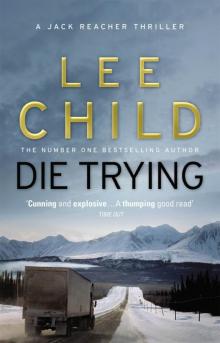 Die Trying
Die Trying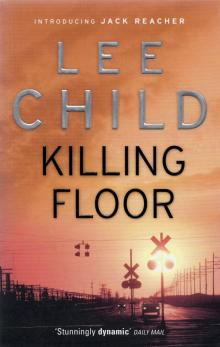 Killing Floor
Killing Floor Persuader
Persuader Tripwire
Tripwire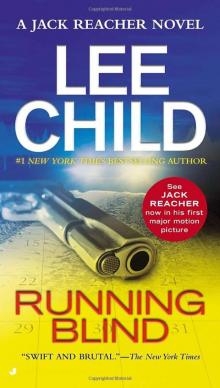 Running Blind
Running Blind Worth Dying For
Worth Dying For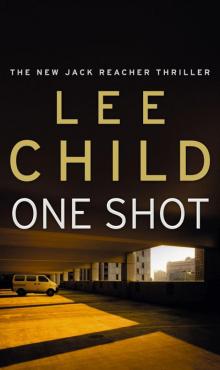 One Shot
One Shot Make Me
Make Me The Midnight Line
The Midnight Line Bad Luck and Trouble
Bad Luck and Trouble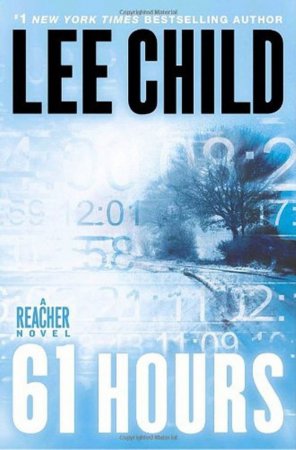 61 Hours
61 Hours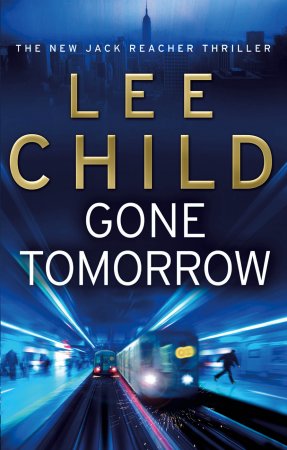 Gone Tomorrow
Gone Tomorrow Night School
Night School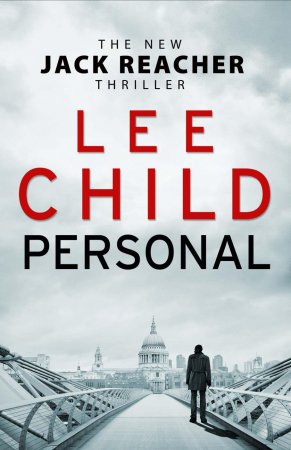 Personal
Personal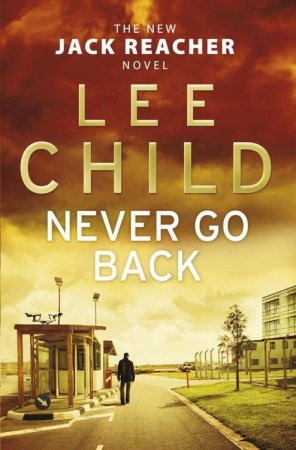 Never Go Back
Never Go Back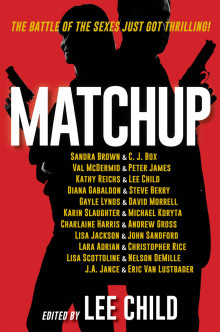 MatchUp
MatchUp A Wanted Man
A Wanted Man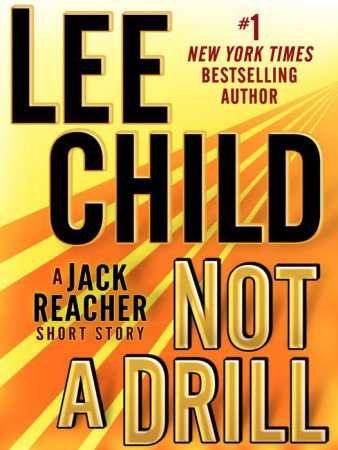 Not a Drill
Not a Drill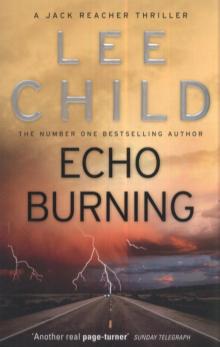 Echo Burning
Echo Burning Small Wars
Small Wars Deep Down
Deep Down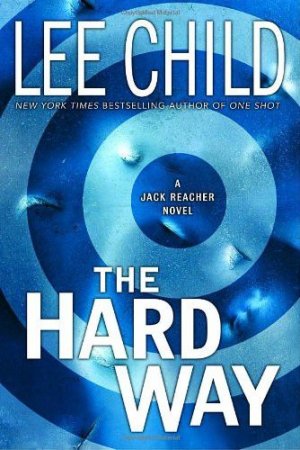 The Hard Way
The Hard Way The Sentinel
The Sentinel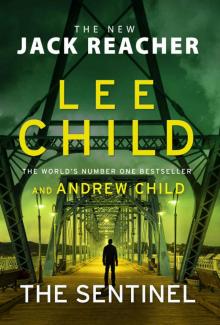 The Sentinel (Jack Reacher)
The Sentinel (Jack Reacher)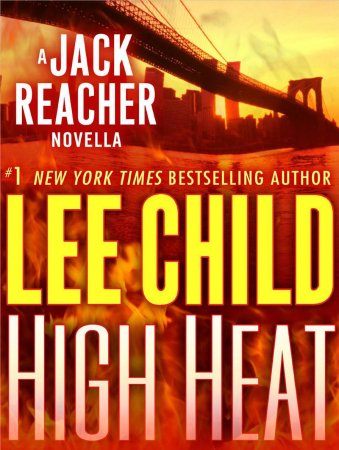 High Heat
High Heat Nothing to Lose
Nothing to Lose The Enemy
The Enemy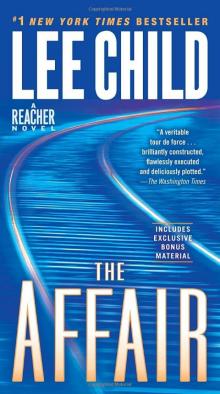 The Affair
The Affair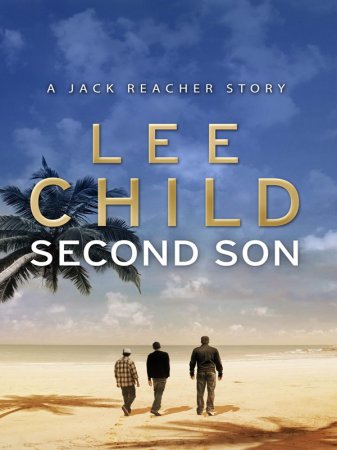 Second Son
Second Son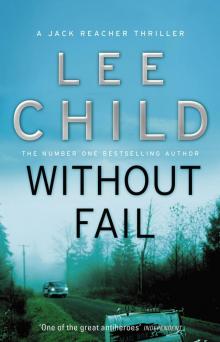 Without Fail
Without Fail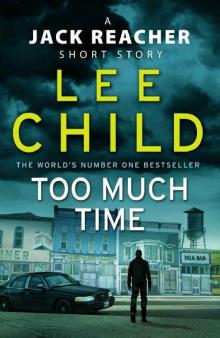 Too Much Time
Too Much Time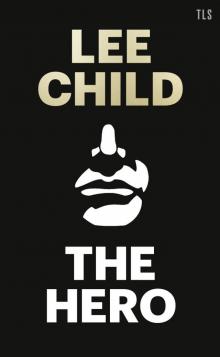 The Hero
The Hero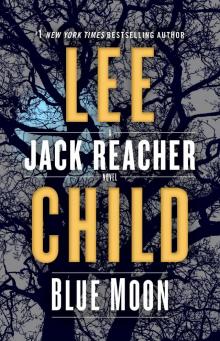 Blue Moon
Blue Moon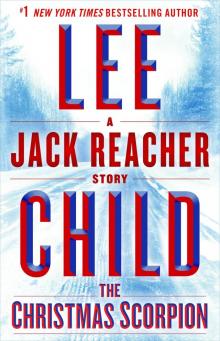 The Christmas Scorpion
The Christmas Scorpion The Nicotine Chronicles
The Nicotine Chronicles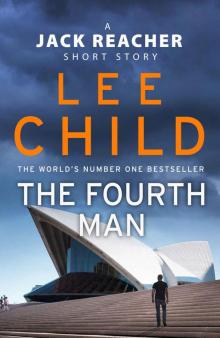 The Fourth Man
The Fourth Man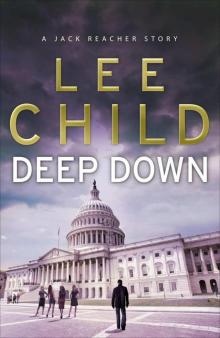 Deep Down_A Jack Reacher short story
Deep Down_A Jack Reacher short story The Essential Jack Reacher 12-Book Bundle
The Essential Jack Reacher 12-Book Bundle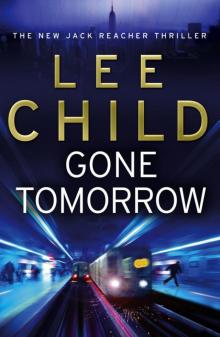 Gone Tomorrow jr-13
Gone Tomorrow jr-13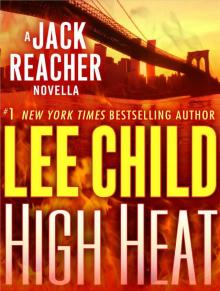 High Heat: A Jack Reacher Novella (jack reacher)
High Heat: A Jack Reacher Novella (jack reacher)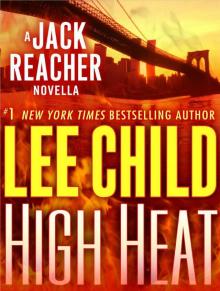 High Heat_A Jack Reacher Novella
High Heat_A Jack Reacher Novella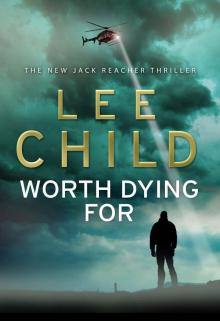 Jack Reacher 15 - Worth Dying For
Jack Reacher 15 - Worth Dying For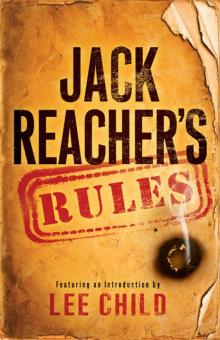 Jack Reacher's Rules
Jack Reacher's Rules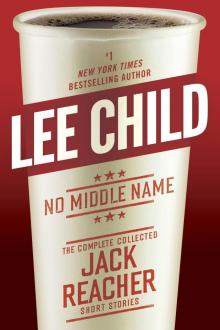 No Middle Name
No Middle Name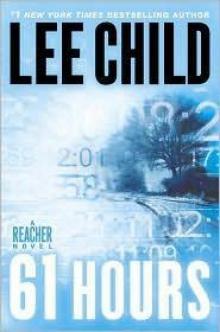 14 61 Hours
14 61 Hours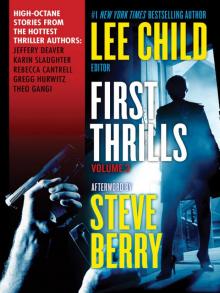 First Thrills, Volume 3
First Thrills, Volume 3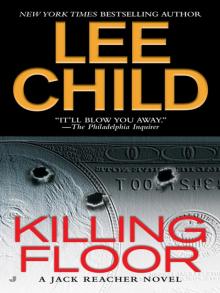 Jack Reacher 01 - Killing Floor
Jack Reacher 01 - Killing Floor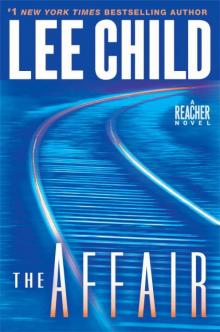 The Affair: A Reacher Novel
The Affair: A Reacher Novel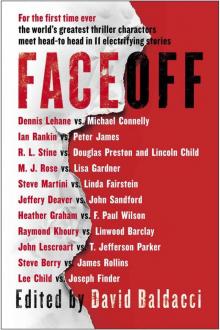 FaceOff
FaceOff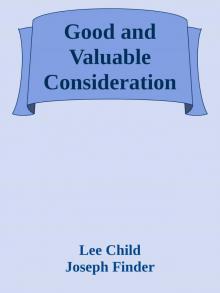 Good and Valuable Consideration
Good and Valuable Consideration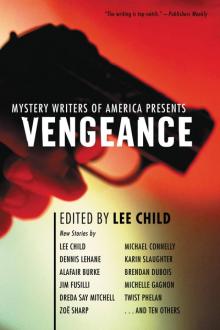 Mystery Writers of America Presents Vengeance
Mystery Writers of America Presents Vengeance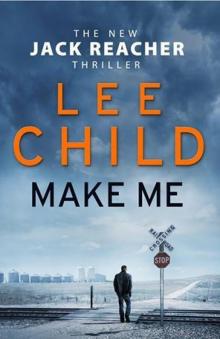 Jack Reacher 20 - Make Me
Jack Reacher 20 - Make Me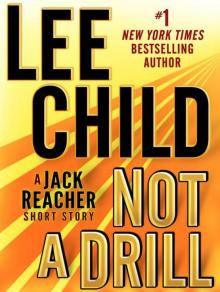 Not a Drill: A Jack Reacher Short Story
Not a Drill: A Jack Reacher Short Story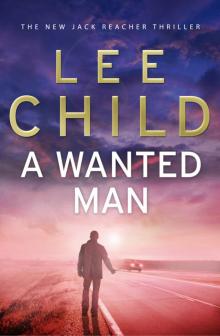 17 A Wanted Man
17 A Wanted Man James Penney's New Identity/Guy Walks Into a Bar
James Penney's New Identity/Guy Walks Into a Bar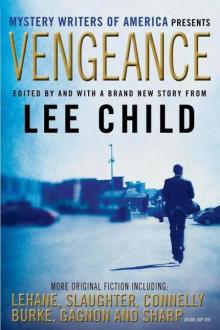 Vengeance: Mystery Writers of America Presents
Vengeance: Mystery Writers of America Presents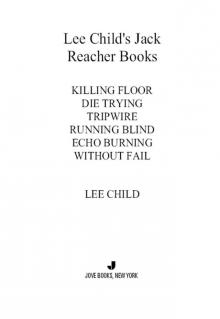 Lee Child's Jack Reacher Books 1-6
Lee Child's Jack Reacher Books 1-6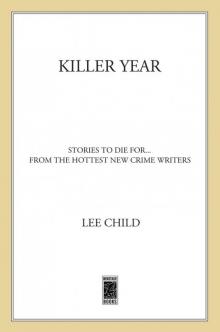 Killer Year
Killer Year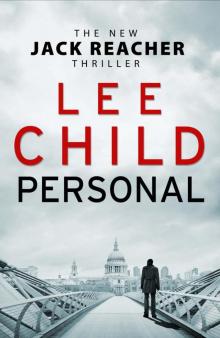 Personal (Jack Reacher 19)
Personal (Jack Reacher 19)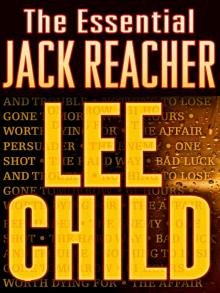 The Essential Jack Reacher 10-Book Bundle
The Essential Jack Reacher 10-Book Bundle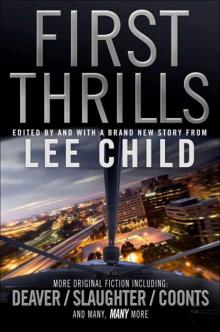 First Thrills
First Thrills Echo Burning jr-5
Echo Burning jr-5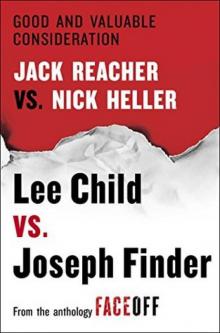 Good and Valuable Consideration_Jack Reacher vs. Nick Heller
Good and Valuable Consideration_Jack Reacher vs. Nick Heller A Wanted Man: (Jack Reacher 17)
A Wanted Man: (Jack Reacher 17) 23 Past Tense
23 Past Tense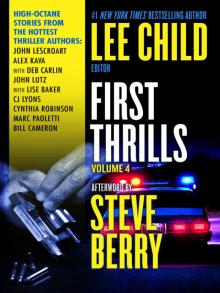 First Thrills, Volume 4
First Thrills, Volume 4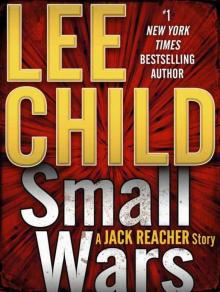 Small Wars_A Jack Reacher Story
Small Wars_A Jack Reacher Story